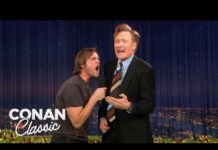Writing academic papers is one of the most popular and, at the same time, difficult assignments while studies. Students face a lot of problems while trying to write an essay or research paper on the suggested topic. The best decision to write one’s paper successfully is to look through ready paper samples and take them as an example for your paper.
How will it help? – you can ask. Everything is simple. You look for research papers for college, for example, and find samples on services such as https://gpalabs.com/. What can be done with them? Pay attention to their structure – how the introduction and conclusion start, what is mentioned in the main body, and so on. Look how arguments are supported and in-text citations are used. And lastly, get to know how properly formatted papers should look like.
Here is an example of a marketing research paper you can look through and analyze to become better in academic writing and more acknowledged in Nescafe marketing.
How Have Cultural Factors Affected the Marketing of Nescafe Instant Coffee?
Nescafé is a brand owned by Swiss multinational Nestlé. The brand is renowned for marketing instant coffee since 1938. In 2019, Nescafé is the world’s leading coffee brand, and its products can be found in over 180 countries. For decades, Nescafé has been adapting its marketing strategy to resist to socio-economic and cultural changes.
In 1976, Nescafé launched its notorious glass jar and invented individual packets. After the Second World War, the traditional family model was disrupted. The company’s individual packets represented this cultural shift. The housewife who used to prepare the coffee ritually was not the only model anymore, and each family member could prepare its own cup at any time.
In the 1980’s, companies started adapting their marketing strategies to local tastes and purchasing powers. Indeed, gone were the days were companies had unique standardized products. With more demanding consumers, Nescafe expanded its product range.
In 2006, the success of Nespresso and Senseo machines resulted in the creation of Nescafé’s high-end Dolce Gusto. The increasing demand for time-saving and convenient products, associated with increasingly nomadic consumers, resulted in the tremendous success of single-serve coffee containers. For the first time, Nescafé went out of the field of instant coffee. Just like our modern societies, coffee became “hyper-individualized.”
In 2014, Nescafé launched the “REDvolution” campaign after deceiving sales. At the pinnacle’s of globalization, the brand’s marketing strategy was based on the creation of a unique concept, “a more unified, powerful umbrella for a brand like Nescafé ‐ a single personality that could also be expressed differently in each country” says Patrice Bula, Nestlé’s Global Head of Marketing.
In a time of mistrust, bursting of the traditional family model, and individuality, Nescafé decided to reposition its image on love, friends, family, and digital-friendly company. In fact, in order to consolidate its position as an international leader, Nescafé developed a new identity system and graphic codes.
In addition, Nescafé also developed with a new baseline: “It all starts with a Nescafé”. T his linguistic choice is not trivial. Indeed, using the word “Nescafé” instead of “coffee” implies that all consumers are aware of the existence of the brand, thus reinforcing the hegemony of Nescafé on other brands. “It” also offers a wide range of possibilities. It can represent the start of a new day with a good breakfast coffee, a meeting, or it can also be the trigger of an encounter. In all cases, “it” represents a relaxing and pleasant moment.
This idea is supported by the brand’s new graphic codes based on 3 of the brand icons: the accent, the mug, and the hub. The black accent became red, evoking warmth and friendliness. The shape of the accent can be found in the mug, whose graphic structure was redefined. Nescafé developed the use of the mug in its international communication, the mug being a simple object that most of the people own and that represents relaxing moments.
Finally, the hub, representing the view from the top of a mug, is used to the service of the company diversity of products. Indeed, this black hub represents a cup of coffee but is “also a window onto Nescafé’s universe” according to CBA, the design agency that redesigned the company’s visual identity.
The brand also invested social networks to reach broader audiences. For instance, on May 4th, Nescafé celebrated the hashtag used by Star Wars fans, hijacking their famous expression and using instead “May the froth be with you,” alongside a photo of Darth Vader with coffee foam on his upper lip.
Nescafé’s digital marketing strategy extended to the creation of an application in 2018, Re:connect. The purpose of the application is to fight against the isolation and loneliness of seniors and bring generations together. Thanks to this free and unique concept that allows users to send a selfie to their loved ones directly on the web pages they are browsing on, Nescafé offers a brand utility service and lives up to its values of bringing people together.
Millennials are well aware of environmental issues. In order to respond to these concerns, Nescafé implemented sustainability initiatives such as refill packs aiming to reduce lorries and greenhouse gas emissions. Kate Power, the brand’s Sustainability Manager, explains that “the idea behind the redesign of the packs supports the Nescafé Plan which brings together Nestlé’s commitments which support responsible farming, responsible production, and responsible consumption”.
“To anybody under 60 years old, Nescafé is boring,” according to Erik Gordon, professor at the University of Michigan’s Ross School of Business. In order to rejuvenate its image, Nestlé spent $7 billion to Starbucks, to obtain the rights to market products under the Starbucks brand. This example of co-branding is another strategy used by Nescafé to get the best of both worlds and adapt to the cultural habits of younger generations who tend to prefer more exotic products, yet sophisticated.
Moreover, the increasing success of coffee shops amongst Millennials also led the brand to launch its own coffee shops. In 2015, two coffee shops opened in Tokyo and Seoul. With their warm atmosphere, digital walls, and tablets, the brand hopes to continue to attract future generations of coffee lovers.
Product diversification, adaptation to consumers, brand repositioning, brand experience, co-branding, digital strategy or even innovation with the creation of new concepts, Nescafé celebrated in 2019 its 81st birthday but continues to adapt its strategy to cultural and socio-economic changes, thus proving its well-deserved leader status.






